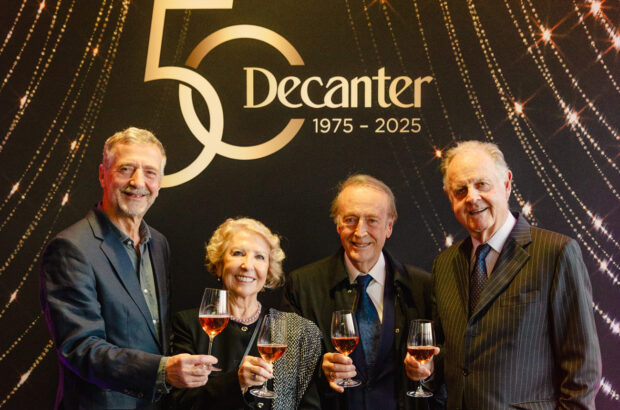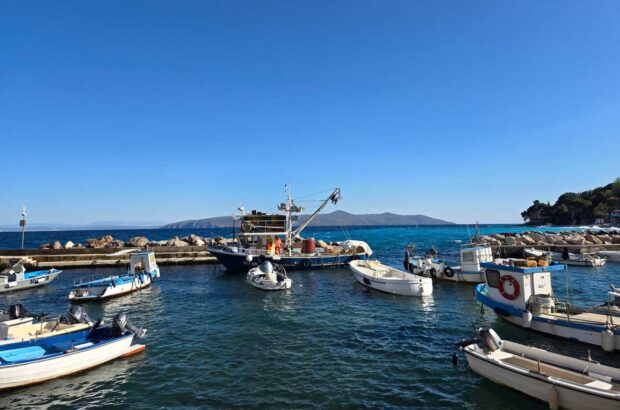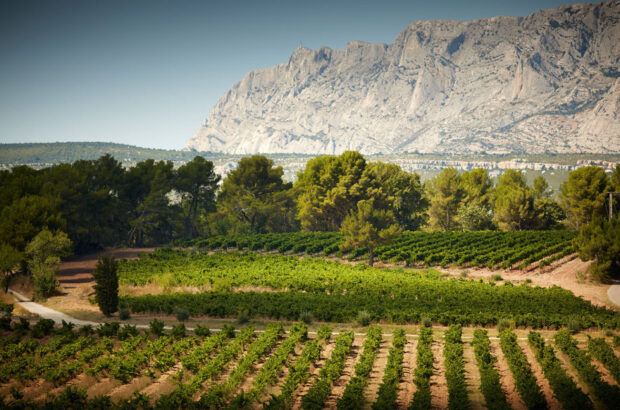Prune Nourry’s Terracotta Daughters bronze sculptures take their inspiration from the Terracotta Army of Xi’an, reimagined as young girls with pigtails and sandals, instead of male soldiers, horses and chariots.
You might have seen them – all 108 of them slightly different in design, created by French artist Nourry working with artisan craftsmen from Xi’an – when they were exhibited in New York, Shanghai, Zurich, Paris and Mexico City. They are now buried in a secret location in China, where they will stay until being unearthed in 2030.
They are a stunning and moving piece of art, asking us to question the impact of the ‘one-child policy’ on gender imbalance in China. And they were not at all what I expected to find in the stunning but tucked-away Château Malromé when I visited there this week.
Château Malromé is best known as the place where Toulouse Lautrec died, aged 36, in 1901, but its AOC Bordeaux wines have rarely set the world alight. I’ve been hearing increasingly good things since the Franco-Vietnamese Huynh family arrived in 2013, headed up by sisters Mélanie and Amélie, and this seemed further proof.
Replicas of the eight bronze statues created by Nourry as a basis for her army (the originals were sold to help fund the education of orphan girls who had stood as models) are on display until September, and I thoroughly recommend making the trip before they move on again.
But I wasn’t at Malromé for this. Instead I was attracted by another development where this estate is leading the way, in hoping to plant in 2020 the first Touriga Nacional grapes to be officially allowed in Bordeaux’s vineyards.
This is the first property that I have heard of to be moving into the implementation phase of a decision that created a huge debate when it was announced a few weeks ago: that of allowing seven new grape varieties into Bordeaux wine as part of the fight against global warming (see details, below).
‘Final authorisation isn’t due until at least next year,’ Charles Estager, estate director, confirms. ‘At this point we are identifying where in the vineyard the grape would be suitable, and speaking to local nurseries who can provide us with the young plants, most likely by importing them from Portugal in partnership with a French nursery’.
What Estager has decided, in discussion with winemaking consultant Bruno Lacoste, is to pull up 30-year-old Malbec vines from an over-productive clone on a sandy-gravel southwest-facing slope, and replace it with Touriga Nacional to see if this grape, so famous in the Douro Valley of Portugal, can replicate its success in Bordeaux.
‘They are real precursors here,’ says Lacoste, ‘because this is all so new right now. A lot of my clients are asking questions, trying to understand what the grapes can bring. Bordeaux nurseries are not yet equipped with these vines, although discussions have begun. But this is not an isolated decision for Malromé.
‘Over 30% of the vineyard has been reworked since the Huynh family arrived, and experimenting with the new grape varieties is only part of a wider strategy’.
For now, most winemakers are taking their time before making any decisions. The first person I thought of to ask about the newly authorised grapes was Jonathan Ducourt, well-known for planting the hybrid grape varieties that are equally unusual in Bordeaux and that go into his Vin de France Métissage wine.
‘For us, we are looking at two main issues,’ he says, ‘alcohol level getting higher and disease pressure’.
There are, he points out, grapes already within the AOC rules, like Colombard, Petit Verdot and Carmenère, that can help with lower alcohol.
‘We have planted about 10 hectares of Colombard in the last five years and now we are planting about the same of Petit Verdot, as well as increasing Cabernet Franc. This is alongside the experiments with hybrid varieties that are intended to fight disease pressure and reduce pesticide use.
‘So with all these experiments, we have decided to wait a couple of years before planting the new grape varieties authorised in the AOC. But we will definitely look at them in the future’.
Other changes
There are other developments that are getting far less press right now, but equally represent a break with Bordeaux traditions. Just last month I read in Entre-deux -Mer’s cahier de charges (winemaking charter) that irrigation is allowed, no more than twice in any single plot in any single growing season, as long as it has been agreed in advance.
This is not exactly new – irrigation has always been allowed upon ‘dérogation’ in cases of extreme drought through a long process of applying for the right from the same governmental body that oversees the cahier de charges and the grape planting rights.
But it has always been phrased as forbidden beyond exceptional circumstances. To see the right to irrigate written out with such precision was a surprise – and still not something that I have seen in any other appellation’s winemaking rules.
Loosening rules on grape varieties is even more surprising perhaps, but it is part of the same movement, as winemakers react to changing climate circumstances. Assessing the result of the changes is going to take time.
And what is sure is that planting new varieties mean more investment to buy and plant the vines, more tanks for separate vinifications, and more paperwork to follow what happens next. And for now, none of the prestigious appellations have even murmured that they may follow suit. What impact it will really have on the taste of Bordeaux wines in the years to come is up for debate.
‘This is an exciting development,’ says Lacoste, ‘and one that shows Bordeaux can evolve. But it is far from being a game-changer just yet’.
The new rules
- All new grapes will continue to be seen as ‘experimental’ for another 10 years.
- They can only cover 5% of plantings in the vineyard, and no more than 10% of a final blend.
- The grapes can’t be mentioned by name on the wine label.
- Only for AOC Bordeaux/Bordeaux Superieur for now, and AOC Entre-deux-Mers and Bordeaux Blanc for the whites. Appellations such as Pauillac or St-Emilion are not affected.
The grapes
Red
Arinarnoa: A cross of Tannat and Cabernet Sauvignon with the concern that, according to Lacoste, ‘it can be powerful and has a tendency to be a little green’.
Marselan: A cross of Cabernet Sauvignon and Grenache that is found fairly widely in the Midi and now in China, where I have tried some really good examples, from Ningxia especially. This seems to me a pretty interesting option.
Castets: An old variety that was once fairly widely grown in the Gironde (and is one of the varieties recently brought to public attention by Liber Pater’s €30,000 example). This is certainly a rare grape that will be hard to find in any quantity in the short-term, but it’s definitely interesting to see how the variety reacts today, and it has real historical interest in the region.
Touriga Nacional: An adaptable variety best known of course in Portugal that gives wines that are powerful and aromatic. Lacoste has vinified with Touriga Nactional in Brazil and is extremely positive about its possibilities here: ‘it could modernise certain Bordeaux wines and bring them both richness and aromatic complexity’.
White
Alvarinho: Planted across Galicia, a brilliant grape although the climate conditions of Bordeaux are quite different from Galicia. If it works, it’s a popular variety with good potential.
Liliorila: A cross of Baroque and Chardonnay. Perhaps the least known of all the suggested varieties, reportedly low acidity when ripe so it seems like a strange choice.
Petit Manseng: Seems the most interesting of the three allowable whites, planted in the Jurançon region of southwest France, with an aromatic complexity that can be a great addition to blends. A side note – it’s actually the Gros Manseng that was chosen by both Château du Retout and Château de Tetre in the Médoc for their excellent Vin de France whites that have been produced for a number of years already.







